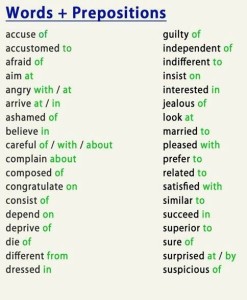Hello everyone!
I thought I’d take a few posts to review some of the trickier aspects of punctuation (or at least, those aspects that seem to trip up writers most often), and I’m going to start with my favorite of punctuation marks: the semicolon. I learned proper use of the semicolon from my English teacher my senior year of high school, and I’ve loved it ever since. I tend to think of the semicolon as the best-kept secret in punctuation: Most people are uncertain about its purpose or how to use it properly, but it’s blessed with a specific utility that allows it to meet particular punctuation needs that no other mark can fulfill–and it does so with great elegance. So, without further ado…
The semicolon has two primary uses, the first of which is to replace the comma/conjunction combo when joining two independent clauses. In case it’s been a while since your last grammar class, I’ll remind you that an independent clause is simply a stand-alone, complete sentence. An example of an independent clause is John went to the store (see how it forms a complete sentence on its own, with noun and verb?). If you wanted to join that independent clause with another independent clause, like Mary stayed home, you would probably use the comma/conjunction combo. The list of conjunctions includes and, but, for, or, nor, yet, and so. We could use any of these conjunctions with a comma to join our two independent clauses to form a single sentence: John went to the store, and Mary stayed home. John went to the store, but Mary stayed home. John went to the store, so Mary stayed home. And so on.
So, if we have the comma/conjunction solution, why do we need the semicolon? Well, the semicolon comes in handy when the two independent clauses express closely related ideas–so closely related that they’re almost two halves of the same thought. In such a case, using a comma/conjunction combo doesn’t quite express the closeness of the relationship between the two clauses; you need a semicolon for that. (See what I did there?) Here’s another example: John went to the store; he couldn’t bear to stay home with Mary. Do you see how the semicolon expresses the closeness of those ideas, with just a single mark? That is the beauty of the first use of the semicolon. (Remember, though, that the semicolon only works in this usage when the two clauses are independent and could each stand as their own complete sentence!)
The second primary use of the semicolon is as a “super-comma.” Sometimes, sentences wind up having a lot of commas, and that leaves anyone reading the sentence prone to getting lost in all the punctuation. Here is an example: John went to the store and bought meat, including chicken, turkey, and beef, dairy, including milk, cheese, and yogurt, vegetables, including lettuce, green beans, and zucchini, and fruit, including apples, oranges, and bananas. Whew! That’s a lot of commas, and a reader might easily get lost in that sentence and start wondering if the author thinks that dairy is a type of meat. In a case like this, a semicolon can provide a lot of clarity, replacing a few of the commas to separate the bigger ideas and leaving the other commas to separate the smaller ideas. So: John went to the store and bought meat, including chicken, turkey, and beef; dairy, including milk, cheese, and yogurt; vegetables, including lettuce, green beans, and zucchini; and fruit, including apples, oranges, and bananas. Do you see how the semicolons are functioning as “super-commas” to separate the ideas of meat, dairy, vegetables, and fruit from one another? They provide some much-needed clarity without requiring the sentence to be rewritten.
I hope that this brief review has shown you the beauty of the semicolon and that you’re ready to tackle your next piece of writing with its power in your arsenal. Please don’t hesitate to leave me questions in the comments if I’ve left you wondering about anything or if you’d like some additional examples. Otherwise, I’ll see you next time for more fun with punctuation!

